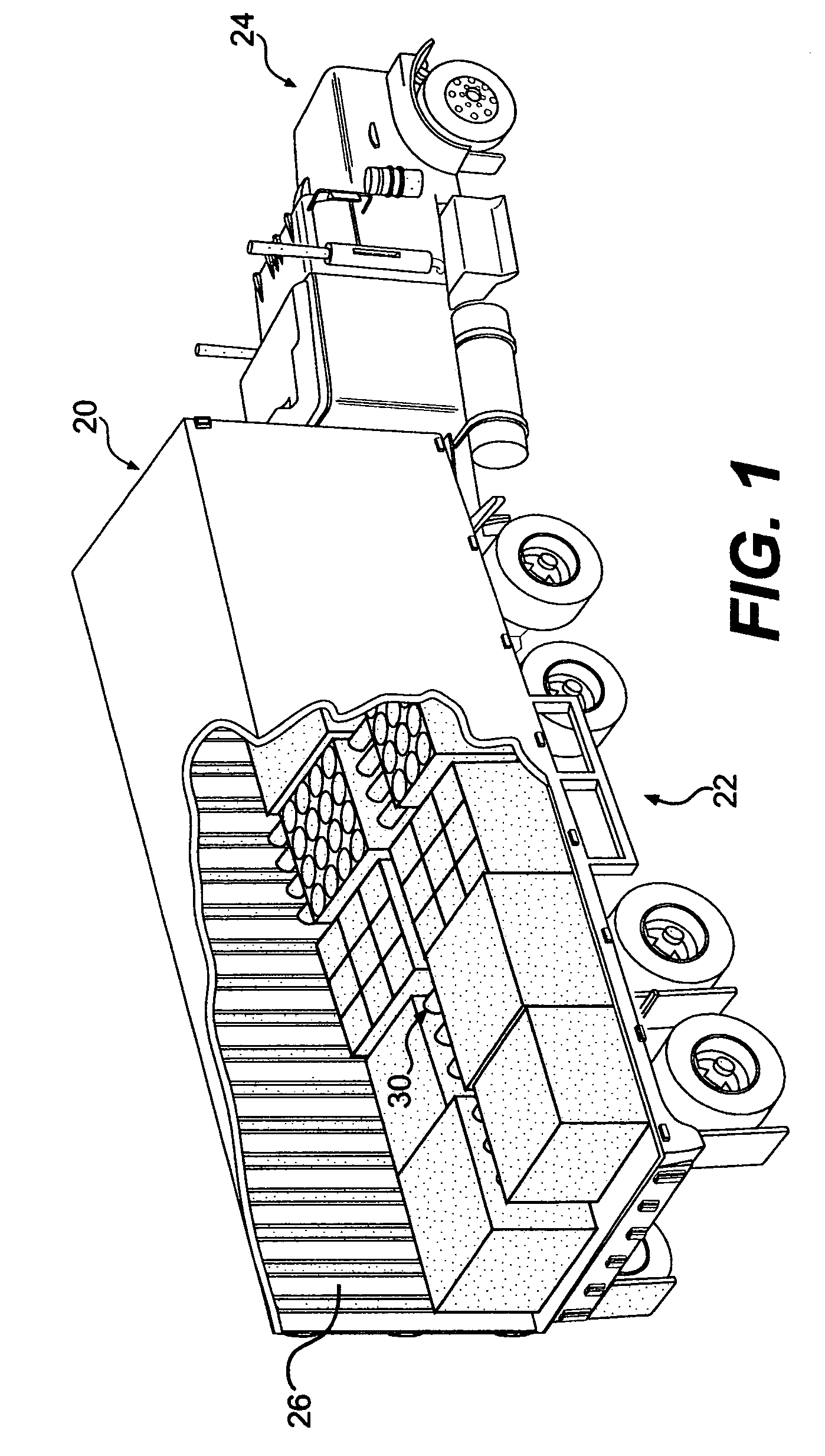Adjustable load stabilizer method and apparatus
a technology of load stabilizer and adjustable bar, which is applied in the direction of load securing, load accommodation, transportation items, etc., can solve the problems of affecting the stability of the rail car
- Summary
- Abstract
- Description
- Claims
- Application Information
AI Technical Summary
Benefits of technology
Problems solved by technology
Method used
Image
Examples
Embodiment Construction
Context of the Invention
[0035]Turning now to the drawing wherein like numerals indicate like parts, FIG. 1 shows an axonometric view of an operating environment of the invention. In this, a transport or cargo container 20 is shown mounted upon a trailer 22 which is towed by a tractor 24 for land transport. Containers such as these are also operable to be mounted on railway flat cars either directly or attached to trailers 22. This form of container is merely illustrative and the subject invention can be used to advantage in ship cargo holds, intermodal containers, tractor trailers, overland truck bodies, rail road boxcars, and the like.
[0036]A partially cut away portion of FIG. 1 depicts various size and shapes of cargo, which are stabilized against each other and against the internal walls 26 of the container 20 by load stabilizers 30 in accordance with the subject invention.
[0037]FIG. 2 further illustrates details of the illustrative operating environment shown in FIG. 1. In this ...
PUM
 Login to View More
Login to View More Abstract
Description
Claims
Application Information
 Login to View More
Login to View More - R&D
- Intellectual Property
- Life Sciences
- Materials
- Tech Scout
- Unparalleled Data Quality
- Higher Quality Content
- 60% Fewer Hallucinations
Browse by: Latest US Patents, China's latest patents, Technical Efficacy Thesaurus, Application Domain, Technology Topic, Popular Technical Reports.
© 2025 PatSnap. All rights reserved.Legal|Privacy policy|Modern Slavery Act Transparency Statement|Sitemap|About US| Contact US: help@patsnap.com



